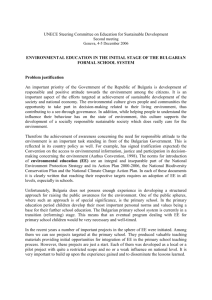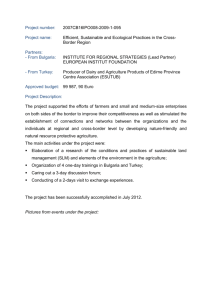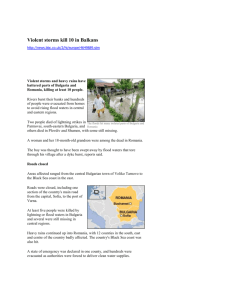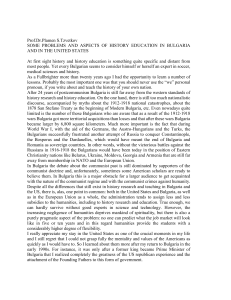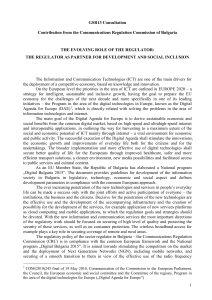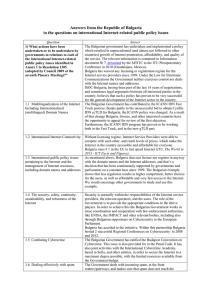Distribution, damage and natural enemies of the Pine Processionary
advertisement
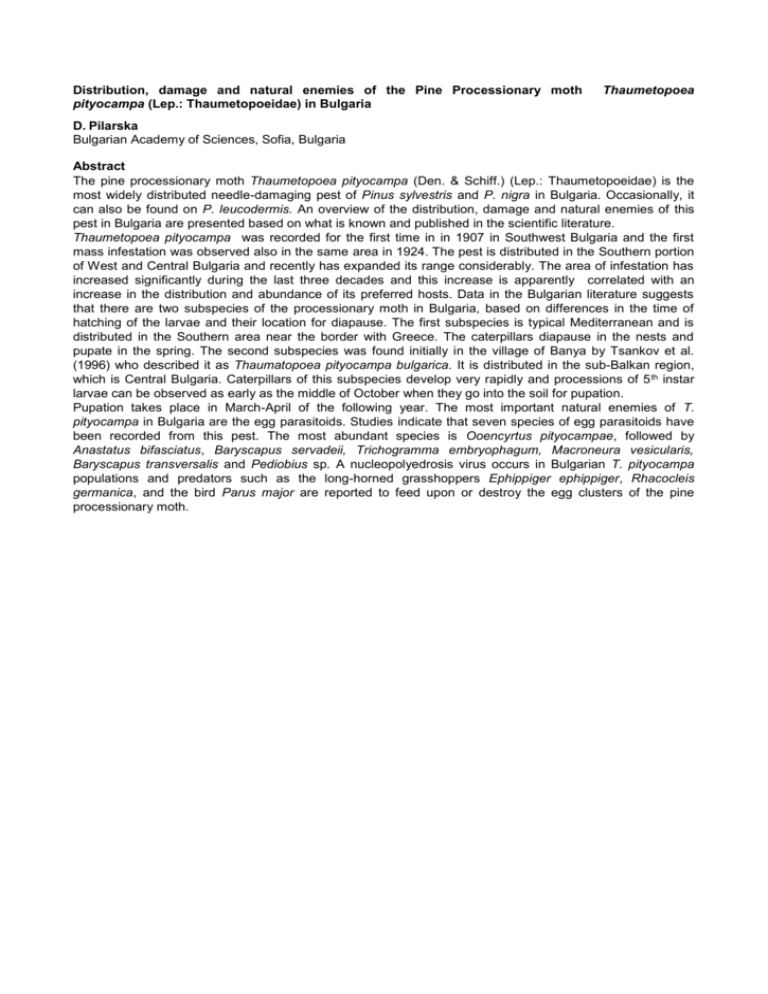
Distribution, damage and natural enemies of the Pine Processionary moth pityocampa (Lep.: Thaumetopoeidae) in Bulgaria Thaumetopoea D. Pilarska Bulgarian Academy of Sciences, Sofia, Bulgaria Abstract The pine processionary moth Thaumetopoea pityocampa (Den. & Schiff.) (Lep.: Thaumetopoeidae) is the most widely distributed needle-damaging pest of Pinus sylvestris and P. nigra in Bulgaria. Occasionally, it can also be found on P. leucodermis. An overview of the distribution, damage and natural enemies of this pest in Bulgaria are presented based on what is known and published in the scientific literature. Thaumetopoea pityocampa was recorded for the first time in in 1907 in Southwest Bulgaria and the first mass infestation was observed also in the same area in 1924. The pest is distributed in the Southern portion of West and Central Bulgaria and recently has expanded its range considerably. The area of infestation has increased significantly during the last three decades and this increase is apparently correlated with an increase in the distribution and abundance of its preferred hosts. Data in the Bulgarian literature suggests that there are two subspecies of the processionary moth in Bulgaria, based on differences in the time of hatching of the larvae and their location for diapause. The first subspecies is typical Mediterranean and is distributed in the Southern area near the border with Greece. The caterpillars diapause in the nests and pupate in the spring. The second subspecies was found initially in the village of Banya by Tsankov et al. (1996) who described it as Thaumatopoea pityocampa bulgarica. It is distributed in the sub-Balkan region, which is Central Bulgaria. Caterpillars of this subspecies develop very rapidly and processions of 5 th instar larvae can be observed as early as the middle of October when they go into the soil for pupation. Pupation takes place in March-April of the following year. The most important natural enemies of T. pityocampa in Bulgaria are the egg parasitoids. Studies indicate that seven species of egg parasitoids have been recorded from this pest. The most abundant species is Ooencyrtus pityocampae, followed by Anastatus bifasciatus, Baryscapus servadeii, Trichogramma embryophagum, Macroneura vesicularis, Baryscapus transversalis and Pediobius sp. A nucleopolyedrosis virus occurs in Bulgarian T. pityocampa populations and predators such as the long-horned grasshoppers Ephippiger ephippiger, Rhacocleis germanica, and the bird Parus major are reported to feed upon or destroy the egg clusters of the pine processionary moth.
